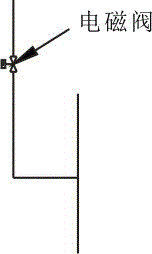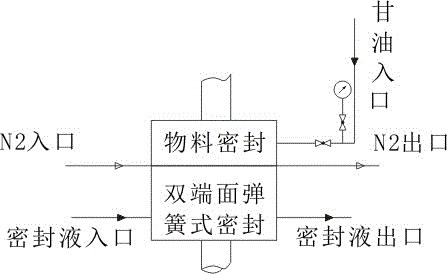Mechanical seal control system of bulk polyvinyl chloride polymerization kettle
A control system and mechanical seal technology, applied in the direction of engine seals, mechanical equipment, engine components, etc., can solve the problems of single system, high risk factors, low degree of intelligence, etc., to achieve the effect of ensuring safety and effectively utilizing resources
- Summary
- Abstract
- Description
- Claims
- Application Information
AI Technical Summary
Problems solved by technology
Method used
Image
Examples
Embodiment Construction
[0019] The following will be combined with Figure 1-Figure 7 The present invention is described in detail, and the technical solutions in the embodiments of the present invention are clearly and completely described. Apparently, the described embodiments are only some of the embodiments of the present invention, not all of them. Based on the embodiments of the present invention, all other embodiments obtained by persons of ordinary skill in the art without making creative efforts belong to the protection scope of the present invention.
[0020] The present invention provides a mechanical seal control system for polyvinyl chloride bulk method polymerization kettle through improvement, which is characterized in that: the control system is an integrated oil station control system, and one oil station simultaneously provides The sealing fluid circulation of the mechanical seal provides pressure to the glycerin at the same time, and a grease pump provides glycerin to the pre-polym...
PUM
 Login to View More
Login to View More Abstract
Description
Claims
Application Information
 Login to View More
Login to View More - R&D
- Intellectual Property
- Life Sciences
- Materials
- Tech Scout
- Unparalleled Data Quality
- Higher Quality Content
- 60% Fewer Hallucinations
Browse by: Latest US Patents, China's latest patents, Technical Efficacy Thesaurus, Application Domain, Technology Topic, Popular Technical Reports.
© 2025 PatSnap. All rights reserved.Legal|Privacy policy|Modern Slavery Act Transparency Statement|Sitemap|About US| Contact US: help@patsnap.com



